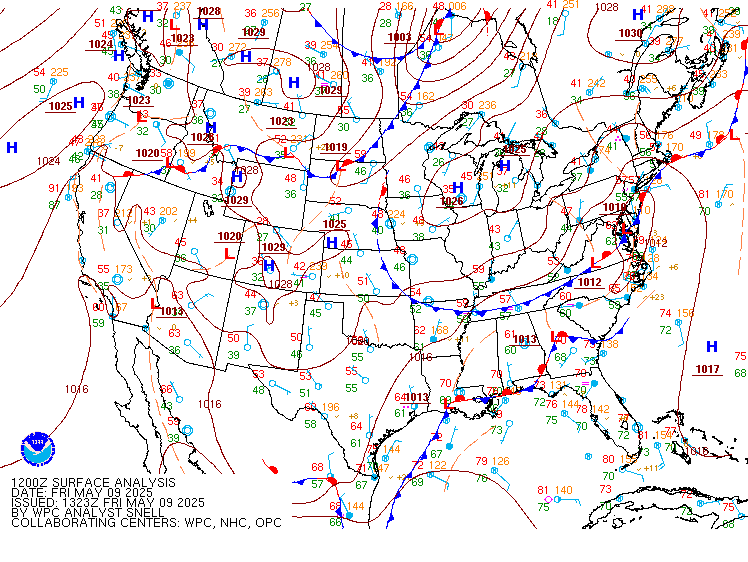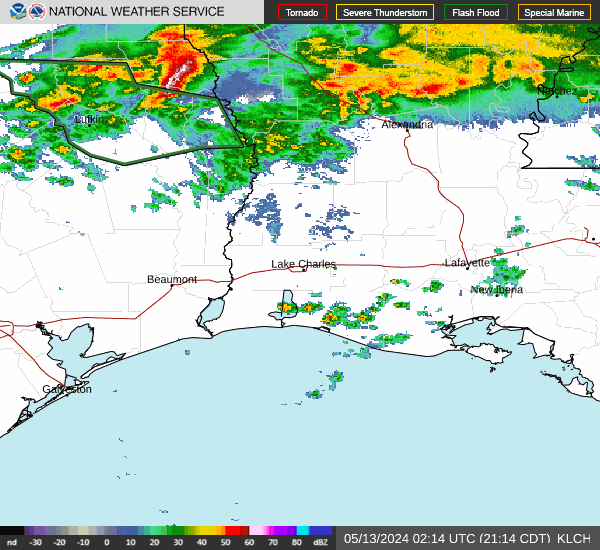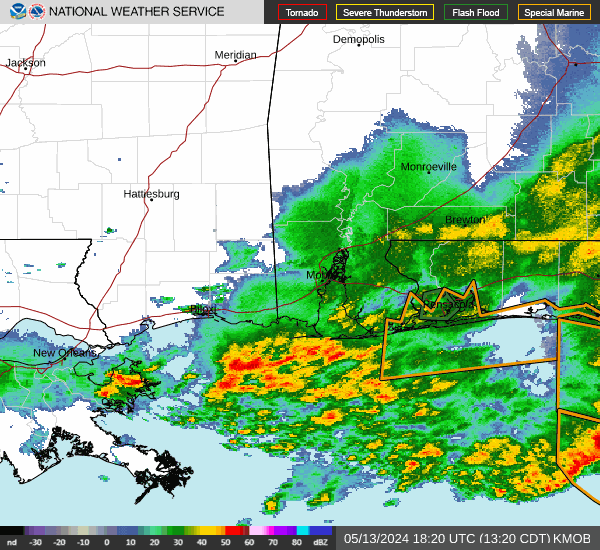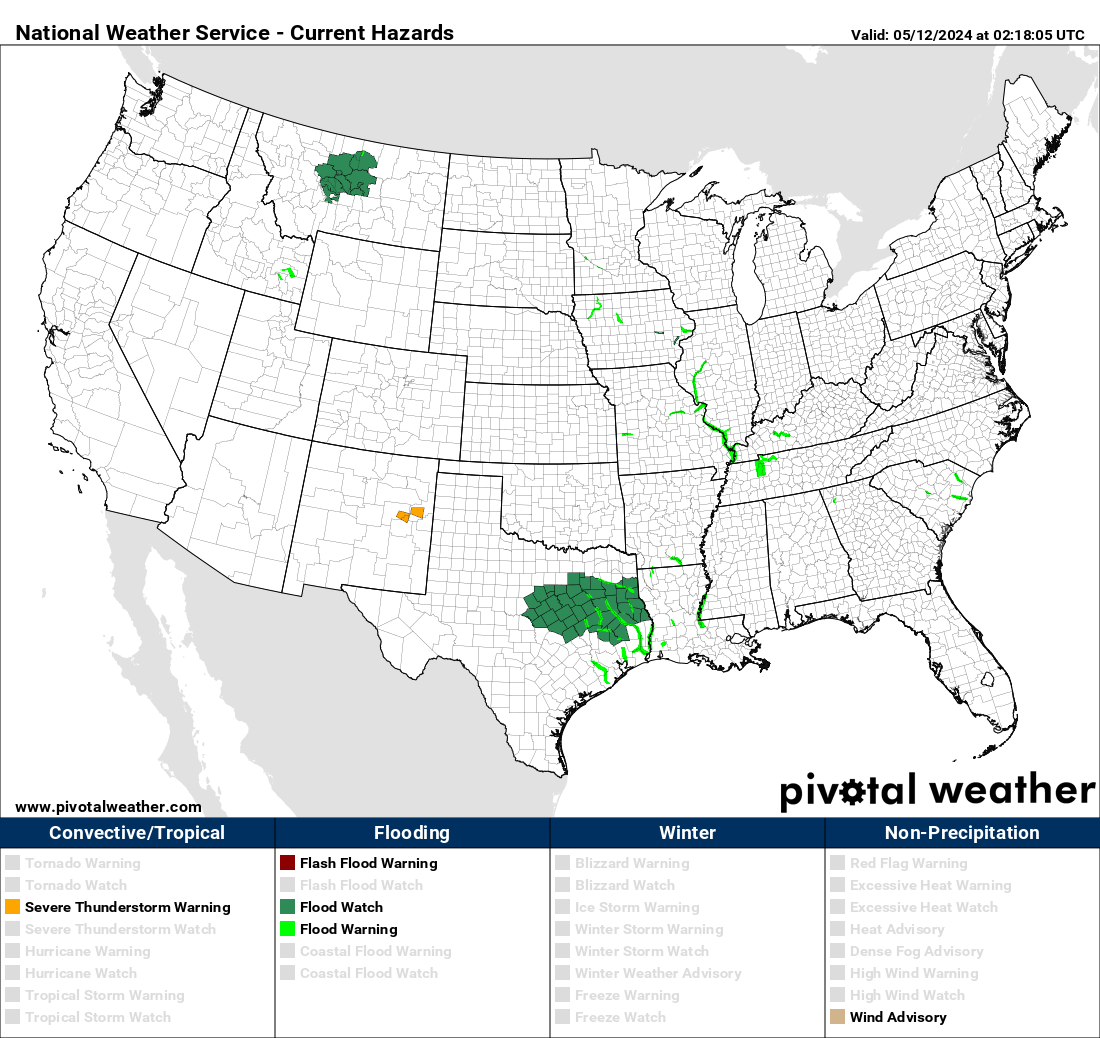Slight Risk For Central Gulf Wed
Jan 31, 2020 13:09:27 GMT -6
SKYSUMMIT, Jess23, and 2 more like this
Post by thermalwind - Touro on Jan 31, 2020 13:09:27 GMT -6
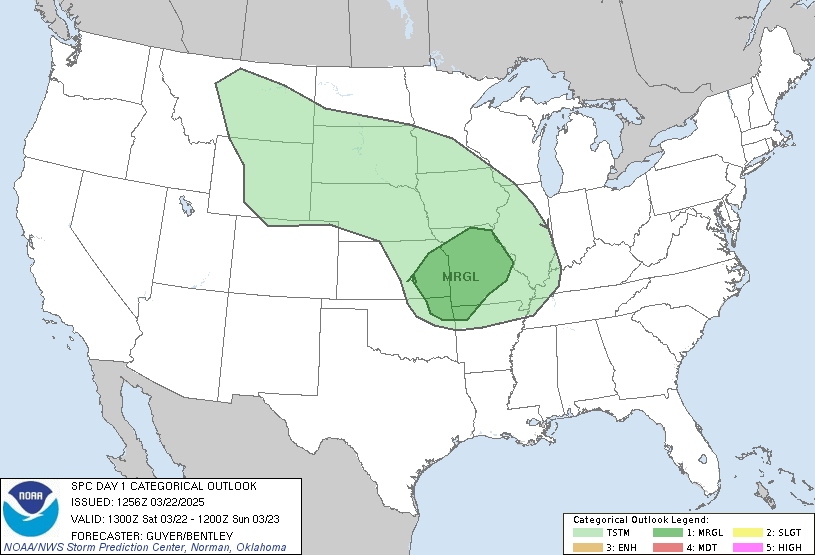
All of LIX zone in slight risk.
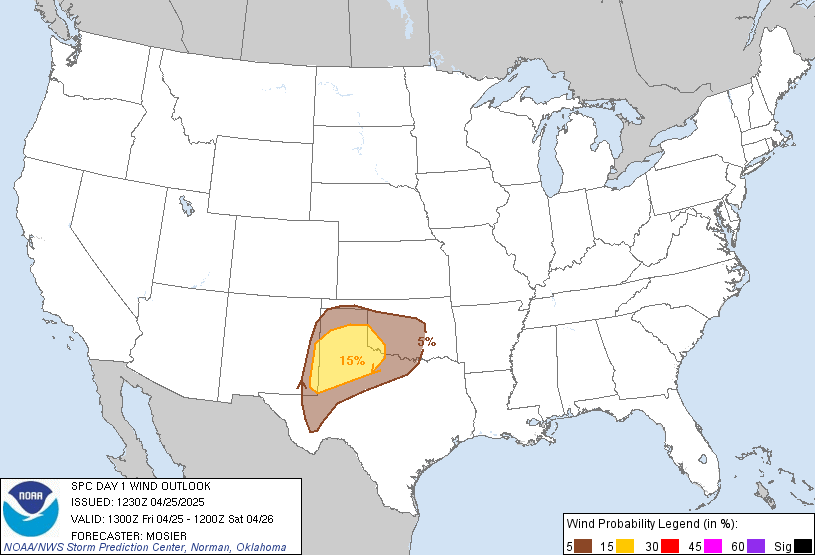
Day 1 Convective Outlook
NWS Storm Prediction Center Norman OK
0653 AM CST Wed Feb 05 2020
Valid 051300Z - 061200Z
...THERE IS A SLIGHT RISK OF SEVERE THUNDERSTORMS TODAY AND TONIGHT
ACROSS PORTIONS OF THE LOWER MISSISSIPPI VALLEY AND SOUTHEAST...
...SUMMARY...
Severe thunderstorms are expected today and tonight across portions
of the lower Mississippi Valley and Southeast, with damaging wind
gusts and a few tornadoes.
...Synopsis...
The CONUS mid/upper-level pattern will be dominated by a major
synoptic trough -- initially extending from the Dakotas across CO to
northwestern MX -- and associated broadly cyclonic to southwesterly
flow to its east. The trough should move eastward gradually,
maintaining net positive tilt, as several shortwaves pivot through
it. By 12Z tomorrow, the trough should extend from the upper
Mississippi Valley across OK to north-central/central MX. Mid/upper
level southwesterlies (in the 500-250-mb layer) will intensify east
of the trough tonight, in a fetch from the TX Gulf Coast to the
upper Great Lakes.
Meanwhile, a strong but slow-moving surface cold front was analyzed
at 11Z from southern WV across eastern KY, becoming quasistationary
southwestward to a weak frontal-wave low between SHV-ESF, then a
cold front again across extreme southeast TX and the upper TX Coast,
to deep south TX. By 00Z, the low should ripple northeastward over
northern MS and western/middle TN, and the front should extend from
there to south-central LA and the northwestern Gulf. By 12Z, the
front should be located across eastern TN, central AL and
southeastern LA. A diffuse marine/warm front -- demarcating the
northern rim of best-modified boundary-layer air from the Gulf --
will spread inland across MS and much of AL, reaching southwestern
GA and the central FL Panhandle overnight.
...Southeast...
Episodic thunderstorm areas are forecast to move northeastward
across the region through tomorrow morning, offering the potential
for damaging winds and a few tornadoes.
At this time, the potential appears to be focused best in three
stages:
1. Prefrontal/warm-sector convection developing inland over MS and
into parts of northwestern AL during the day, as the air mass
gradually destabilizes from a combination of slow/diffuse diurnal
heating and boundary-layer theta-e advection. A persistent cone of
low-level confluent flow, with associated convergence amidst
weakening MLCINH, will support this activity. Mixed, potentially
messy storm modes are possible, along with some initially discrete
or embedded supercells, with flow aloft being largely parallel to
the zone of ascent.
2. Convection developing near the marine/warm front and farther
south into the optimally moist/high-theta-e Gulf warm sector this
afternoon into overnight. Coverage is very uncertain in this regime
due to the combination of weak CINH and weak forcing for ascent, but
some sustained/discrete storms are possible.
3. Near-frontal thunderstorms this afternoon through overnight --
initially over parts of LA/southeastern AR/MS and filling in
overnight as the frontal zone crosses the outlook area. Confidence
is greatest in relatively dense (scattered to numerous) storm
coverage in this regime, which also is likely to assume messy/quasi-
linear mode with time beneath nearly front-parallel flow. Still,
embedded supercells, bows and QLCS circulations will maximize severe
potential locally.
Convective coverage and longevity are still quite unclear,
especially in the first two regimes, given the "CAPE robber" stable
layer evident in midlevels in the 12Z LIX/JAN RAOBs, but not
upstream at LCH.
The warm sector will be characterized by increasing moisture/
buoyancy with southward extent toward the coast, favorable low-level
and deep shear area-wide, and stronger lift over northern and
frontal areas. Forecast soundings reasonably depict a broad area of
1000-2000 J/kg MLCAPE -- supported by surface dew points in the 60s
F, PW around 1.5 inches, and mean mixing ratios generally in the
13-15 g/kg range. Effective-shear magnitudes of 50-60 kt and
200-400 J/kg effective SRH should be rather common, which would
support tornado threats with any sustained/discrete cells, and
conditionally, significant-tornado potential given the parameter
space involved. Some subset of this broad risk area may be upgraded
once 12Z+ progs have arrived, and mesoscale trends become more
certain.
..Edwards/Kerr.. 02/05/2020
CLICK TO GET WUUS01 PTSDY1 PRODUCT
NWS Storm Prediction Center Norman OK
0653 AM CST Wed Feb 05 2020
Valid 051300Z - 061200Z
...THERE IS A SLIGHT RISK OF SEVERE THUNDERSTORMS TODAY AND TONIGHT
ACROSS PORTIONS OF THE LOWER MISSISSIPPI VALLEY AND SOUTHEAST...
...SUMMARY...
Severe thunderstorms are expected today and tonight across portions
of the lower Mississippi Valley and Southeast, with damaging wind
gusts and a few tornadoes.
...Synopsis...
The CONUS mid/upper-level pattern will be dominated by a major
synoptic trough -- initially extending from the Dakotas across CO to
northwestern MX -- and associated broadly cyclonic to southwesterly
flow to its east. The trough should move eastward gradually,
maintaining net positive tilt, as several shortwaves pivot through
it. By 12Z tomorrow, the trough should extend from the upper
Mississippi Valley across OK to north-central/central MX. Mid/upper
level southwesterlies (in the 500-250-mb layer) will intensify east
of the trough tonight, in a fetch from the TX Gulf Coast to the
upper Great Lakes.
Meanwhile, a strong but slow-moving surface cold front was analyzed
at 11Z from southern WV across eastern KY, becoming quasistationary
southwestward to a weak frontal-wave low between SHV-ESF, then a
cold front again across extreme southeast TX and the upper TX Coast,
to deep south TX. By 00Z, the low should ripple northeastward over
northern MS and western/middle TN, and the front should extend from
there to south-central LA and the northwestern Gulf. By 12Z, the
front should be located across eastern TN, central AL and
southeastern LA. A diffuse marine/warm front -- demarcating the
northern rim of best-modified boundary-layer air from the Gulf --
will spread inland across MS and much of AL, reaching southwestern
GA and the central FL Panhandle overnight.
...Southeast...
Episodic thunderstorm areas are forecast to move northeastward
across the region through tomorrow morning, offering the potential
for damaging winds and a few tornadoes.
At this time, the potential appears to be focused best in three
stages:
1. Prefrontal/warm-sector convection developing inland over MS and
into parts of northwestern AL during the day, as the air mass
gradually destabilizes from a combination of slow/diffuse diurnal
heating and boundary-layer theta-e advection. A persistent cone of
low-level confluent flow, with associated convergence amidst
weakening MLCINH, will support this activity. Mixed, potentially
messy storm modes are possible, along with some initially discrete
or embedded supercells, with flow aloft being largely parallel to
the zone of ascent.
2. Convection developing near the marine/warm front and farther
south into the optimally moist/high-theta-e Gulf warm sector this
afternoon into overnight. Coverage is very uncertain in this regime
due to the combination of weak CINH and weak forcing for ascent, but
some sustained/discrete storms are possible.
3. Near-frontal thunderstorms this afternoon through overnight --
initially over parts of LA/southeastern AR/MS and filling in
overnight as the frontal zone crosses the outlook area. Confidence
is greatest in relatively dense (scattered to numerous) storm
coverage in this regime, which also is likely to assume messy/quasi-
linear mode with time beneath nearly front-parallel flow. Still,
embedded supercells, bows and QLCS circulations will maximize severe
potential locally.
Convective coverage and longevity are still quite unclear,
especially in the first two regimes, given the "CAPE robber" stable
layer evident in midlevels in the 12Z LIX/JAN RAOBs, but not
upstream at LCH.
The warm sector will be characterized by increasing moisture/
buoyancy with southward extent toward the coast, favorable low-level
and deep shear area-wide, and stronger lift over northern and
frontal areas. Forecast soundings reasonably depict a broad area of
1000-2000 J/kg MLCAPE -- supported by surface dew points in the 60s
F, PW around 1.5 inches, and mean mixing ratios generally in the
13-15 g/kg range. Effective-shear magnitudes of 50-60 kt and
200-400 J/kg effective SRH should be rather common, which would
support tornado threats with any sustained/discrete cells, and
conditionally, significant-tornado potential given the parameter
space involved. Some subset of this broad risk area may be upgraded
once 12Z+ progs have arrived, and mesoscale trends become more
certain.
..Edwards/Kerr.. 02/05/2020
CLICK TO GET WUUS01 PTSDY1 PRODUCT
Great discussion from the SPC this morning. Worth reading through.
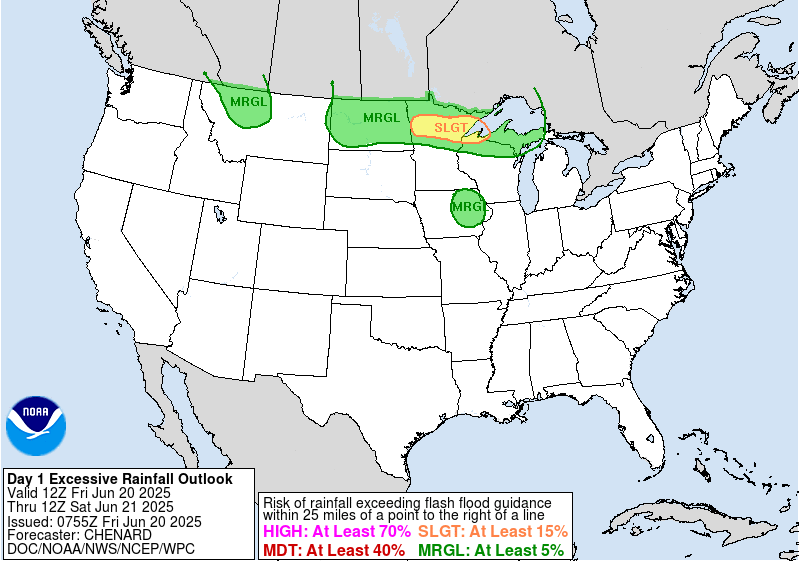
Excessive Rainfall Discussion
NWS Weather Prediction Center College Park MD
411 AM EST Wed Feb 05 2020
Day 1
Valid 12Z Wed Feb 05 2020 - 12Z Thu Feb 06 2020
...THERE IS A SLIGHT RISK OF EXCESSIVE RAINFALL FOR PORTIONS OF
THE SOUTHEAST & SOUTHERN APPALACHIANS...
...Southeast/Southern Appalachians...
A potent longwave trough continues to move east into the Plains,
establishing an atmospheric river in and near the Southeast with
moisture aloft from the eastern Pacific and Gulf moisture captured
in the low-levels. Divergence aloft to its east and southeast
will be favored. A warm front will lift north across the region
with another wave of moisture and instability surging northward.
Two axes of heavy rainfall are expected: one with an area of
low-level frontogenesis in and near Eastern TN as well as to the
south closer to the instability pool (MUCAPE values >1000 J/kg)
just inland of the Gulf Coast. Some elevated instability should be
able to sneak into the TN Valley. Precipitable water values are
expected to climb above 1.75 inches (which is 2.5-3.5 sigmas above
the mean). Inflow at 850 hPa increasing to ~65 kts, near the
magnitude of the mean 850-400 hPa wind, which would allow for
sufficient effective bulk shear for various modes of organized
convection where instability is > 500 J/kg (linear bands and
mesocyclones).
The overall synoptic pattern favors a broad area of heavy
rainfall, though recent two week dryness across much of the region
should keep the risk of excessive rainfall/flash flooding as
slight -- KY and northern TN has been a very recent exception due
to rainfall over the past 24 hours. Areal average precipitation
will be around 1.5-3" with locally higher amounts possible,
especially across portions of TN/AL and adjacent to the central
Gulf Coast region. The combination of moisture and instability
should allow for hourly rain totals to 2". Our model choice for
QPF was a blend of WPC continuity, the 00z National Blend of
Models, the 00z GFS, the 00z probability matched HREF mean, the
00z HRRR, the 00z ECMWF, and the 00z Canadian region model.
Adjustments made to the existing risk areas match recent changes
in WPC QPF.
NWS Weather Prediction Center College Park MD
411 AM EST Wed Feb 05 2020
Day 1
Valid 12Z Wed Feb 05 2020 - 12Z Thu Feb 06 2020
...THERE IS A SLIGHT RISK OF EXCESSIVE RAINFALL FOR PORTIONS OF
THE SOUTHEAST & SOUTHERN APPALACHIANS...
...Southeast/Southern Appalachians...
A potent longwave trough continues to move east into the Plains,
establishing an atmospheric river in and near the Southeast with
moisture aloft from the eastern Pacific and Gulf moisture captured
in the low-levels. Divergence aloft to its east and southeast
will be favored. A warm front will lift north across the region
with another wave of moisture and instability surging northward.
Two axes of heavy rainfall are expected: one with an area of
low-level frontogenesis in and near Eastern TN as well as to the
south closer to the instability pool (MUCAPE values >1000 J/kg)
just inland of the Gulf Coast. Some elevated instability should be
able to sneak into the TN Valley. Precipitable water values are
expected to climb above 1.75 inches (which is 2.5-3.5 sigmas above
the mean). Inflow at 850 hPa increasing to ~65 kts, near the
magnitude of the mean 850-400 hPa wind, which would allow for
sufficient effective bulk shear for various modes of organized
convection where instability is > 500 J/kg (linear bands and
mesocyclones).
The overall synoptic pattern favors a broad area of heavy
rainfall, though recent two week dryness across much of the region
should keep the risk of excessive rainfall/flash flooding as
slight -- KY and northern TN has been a very recent exception due
to rainfall over the past 24 hours. Areal average precipitation
will be around 1.5-3" with locally higher amounts possible,
especially across portions of TN/AL and adjacent to the central
Gulf Coast region. The combination of moisture and instability
should allow for hourly rain totals to 2". Our model choice for
QPF was a blend of WPC continuity, the 00z National Blend of
Models, the 00z GFS, the 00z probability matched HREF mean, the
00z HRRR, the 00z ECMWF, and the 00z Canadian region model.
Adjustments made to the existing risk areas match recent changes
in WPC QPF.









